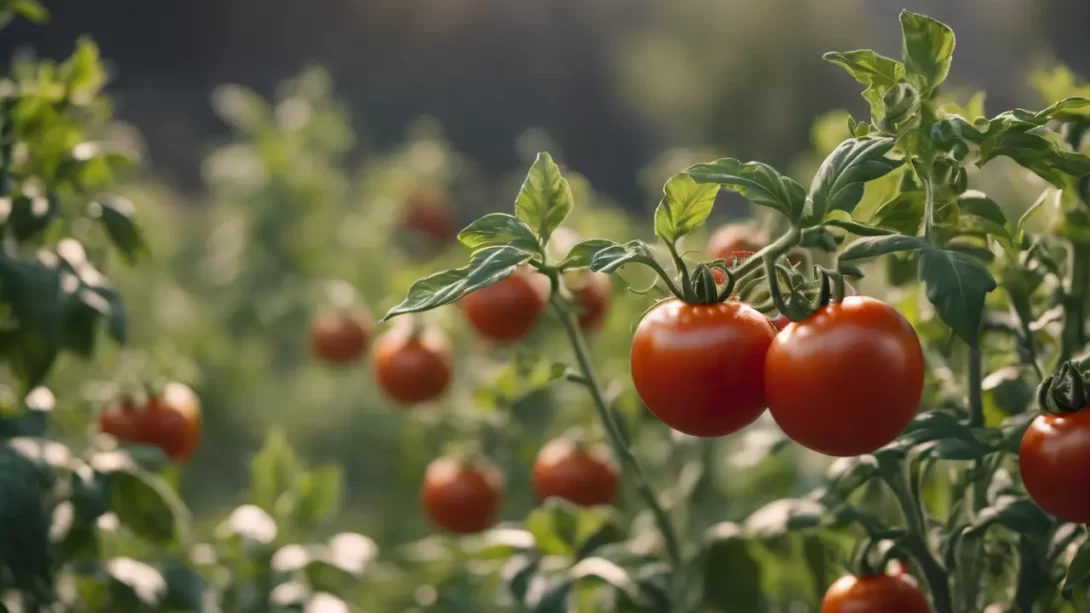Tomato plants, a staple in many gardens, are unfortunately prone to various pest infestations. These pests not only damage the plants and reduce the yield but can also affect the quality of the tomatoes. Understanding how to protect your tomato plants from common bugs is crucial for any gardener looking to enjoy a healthy and bountiful harvest.
Identifying Common Tomato Plant Pests
Several pests are known to target tomato plants, with each exhibiting specific signs of infestation. Aphids, small sap-sucking insects, can cause leaves to curl and stunt growth. Tomato hornworms, large green caterpillars, chew large holes in leaves and fruits. Whiteflies congregate under leaves, leading to yellowing and wilting, while spider mites cause speckled leaves and fine webs. Recognizing these signs early is key to effective pest control.
Preventative Measures
Prevention is the most effective strategy in pest management. Crop rotation helps prevent the buildup of pests in the soil. Planting pest-resistant tomato varieties can greatly reduce the likelihood of infestations. Healthy soil is fundamental; enriching soil with organic matter and ensuring proper drainage can boost the plant’s natural defenses. Companion planting also plays a role; certain plants like marigolds and basil repel specific tomato pests and can be planted nearby as a protective measure.
Natural Pest Control Methods
Employing natural methods to control pests is beneficial for both your plants and the environment. Introducing beneficial insects like ladybugs and lacewings can help control aphid populations. Similarly, parasitic wasps are effective against tomato hornworms. For immediate action, homemade remedies such as a soap spray (made with water and mild liquid soap) or neem oil can deter and kill soft-bodied pests like aphids and whiteflies. Apply these treatments in the early morning or late evening to avoid harming beneficial insects and to prevent leaf burn.
Chemical Control Options
While natural methods are preferable, there are instances where chemical pesticides may be necessary. If choosing this route, opt for products specifically labeled for use on tomato plants and pests. Always follow the manufacturer’s instructions to avoid damaging your plants or harming beneficial insects and the surrounding environment. It’s important to use these chemicals judiciously and as a last resort, focusing on targeted applications rather than broad-spectrum treatments.
Physical Barriers and Traps
Physical barriers can effectively prevent pests from reaching your tomato plants. Floating row covers, made of lightweight fabric, allow light and water in while keeping insects out. Netting can also be used, especially to protect against larger pests like birds and hornworms. Traps can be another line of defense; pheromone traps attract and trap specific pests, and sticky traps can catch flying insects like whiteflies. Position these strategically around your tomato plants for maximum effectiveness.
Regular Monitoring and Maintenance
Consistent monitoring is crucial in managing pests on tomato plants. Regularly inspect your plants for any signs of pest activity. Pay close attention to the undersides of leaves, stems, and the area around the soil, as many pests prefer these hidden spots. Early detection allows for more effective and less invasive control methods.
Routine maintenance plays a significant role in preventing pest infestations. Remove any weak or infested parts of the plant immediately to prevent the spread of pests. Keeping the area around the plants clean and free of debris can also reduce the likelihood of pest invasions. Proper watering and fertilization help in maintaining the overall health of the plants, making them less susceptible to pests.
Integrated Pest Management
Integrated Pest Management (IPM) is a holistic approach to pest control that combines physical, biological, and chemical tools in a way that minimizes environmental and health risks. IPM emphasizes the use of natural and preventive measures first, resorting to chemicals only as a last resort. This approach ensures a sustainable and environmentally friendly way to manage pests on tomato plants.
Conclusion
Keeping bugs off tomato plants requires a combination of vigilance, preventive measures, and appropriate interventions. Regular monitoring, coupled with natural pest control methods, can effectively manage most pest issues. Chemical treatments should be used sparingly and responsibly. By employing these strategies, gardeners can enjoy healthy tomato plants and a fruitful harvest, while also safeguarding the environment.




